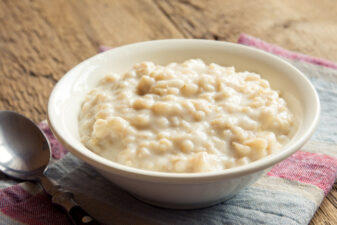 Maca, goji berries… what gives? Miriam shows how to buy local superfoods without the cost and fancy wasteful packaging.
Maca, goji berries… what gives? Miriam shows how to buy local superfoods without the cost and fancy wasteful packaging.
Colorful, flavorful, wonderful, natural products crammed with every natural antioxidant, mineral, micro-nutrient, essential fatty acid and protein you can think of. And I can get them for you, too – wholesale.
What? These aren’t superfoods? You’re looking for capsules or powders in bottles bearing attractive “green” logos. But all you see on the table are humble… vegetables. Um, we’ve had a misunderstanding, it seems.
True, these are slow foods (read about a slow food chef here) – not the instant commercial products known as “superfoods.” What’s that again? If it’s going to be fresh produce, at least I could have shown you some maca root, some goji berries? (See the market where I’m buying fresh produce these days.)
Valuable as maca and goji really are, they’re not native to the Middle East region.
Maca, for example, comes from the Peruvian highlands, where searing summers alternates with below-freezing winter temperatures, and high winds buffet the landscape. I don’t think it would grow here in the Middle East.
Goji berries, now, they might take. Of course, we’d have to wait three years before our plants bear fruit, but never mind – the leaves are edible. We can eat those in the meantime.
On the other hand, why wait? Fresh fruit and vegetables, both cultivated and wild, are powerful nutritional sources. Much quicker and cheaper than imported wonder-foods, or extracts of them, and much easier to get.
As nutrients and medicines, extracts fall behind whole foods because when they’re made, only the properties manufacturers consider important are retained in the product. Unknown components are discarded. To get all the goodness out of a food, it has to be consumed as a whole, organic piece, with all its mysterious unknowns interacting with each other and with our bodies.
Next time you’re in the health food store, ignore exotic foods flown in from 5,000 miles away. Leave the blue-green algae, the spirulina, the whey powder where they are. Shop from the shelves where whole grains and organic fresh produce sit.
- Eat broccoli, sweet potatoes, mangoes, beans, humus, labneh, humanely-reared poultry.
- Douse your superfoods with golden liquid superfood – olive oil.
- Spice your whole-grain pizza with za’atar from your windowsill garden.
You’ll fizz and crackle with energy.
And you’ll feel good about having no packaging to recycle, because these foods don’t need packaging, or even much advertising. Humanity has survived and evolved on these same humble ingredients since pre-history, with never a need to flog their images in glossy magazines or on billboards. Doesn’t a cauliflower look ridiculous dressed up with a fancy name and crammed into fancy packaging? The marketing ploy backfires; it makes the familiar green-and-white vegetable that we can pick up and heft in our hand look much more attractive.
Still want to plant goji, astragalus, burdock? Go ahead, and I wish you success. I’m in favor of growing as much of our own foods as we humanly can – even just a handful of parsley in a window box. After all, much of our fresh produce was only recently introduced to local farmers. But choose wisely. Not every new plant takes to a new climate. Believe me, if I could get dandelions to grow in hot, humid central Israel where I live, I’d plant all my window boxes with them. I’ve tried – it hasn’t worked.
Go wild
Don’t neglect wild superfoods either. Nettles, chickweed, purslane, mallows, and many other super edible “weeds” grow abundantly every springtime. There’s nothing wrong with drying some for later, either. (Just pick ethically and leave enough for new growth next season.)
Next time you’re out shopping with antioxidants in mind, cast an eye over the fruit and vegetables. Choose the most deeply-colored ones and when you get home, eat them.
Now that’s superfood.
More on sustainable, slow foods on Green Prophet:
- How Green is Your Garlic?
- Beirut’s Souk el Tayeb Farmer’s Market
- Organic Produce at Amman’s Souk al Balad




Very true. My husband, a food technologist who works for a company which manufacturers nutritional supplements, has been saying for years that this is all hype. One of his favourite sayings is ‘Don’t buy Vitamin C supplements, eat an orange a day’.
Sue, this is an interesting validation from someone who works in the industry. However, I don’t deny that specific supplements can be vital when there are deficiencies. For example, for those of us who sit in closed rooms all day, not getting enough sunshine, Vitamin D drops are important. Older people may need to boost their iron and Vitamin B12. Of course, there’s no magic bullet, no super-quick pill that can replace the real superfoods – the kind you cook and eat with fork and knife. Thanks for the comment!
Cute picture. I hope we don’t find out that large amounts of broccoli causes cancer in hamsters. What is labneh? I am dying to start my own windowsill herb garden. Does it matter what time of year I start? I especially want to grow lavender and things I don’t find in the store. I love it in lentil soup!
Yosefa, labneh is what you get when you allow the whey in yoghurt to drip, so that the mass dries out and becomes somewhat more sour. If you’re in Israel, this is a good time to start lavender, rosemary, za’atar, and other sturdy herbs. If you get starts, tender herbs like mint and parsley work too. Otherwise, wait till warmer weather to plant seeds.